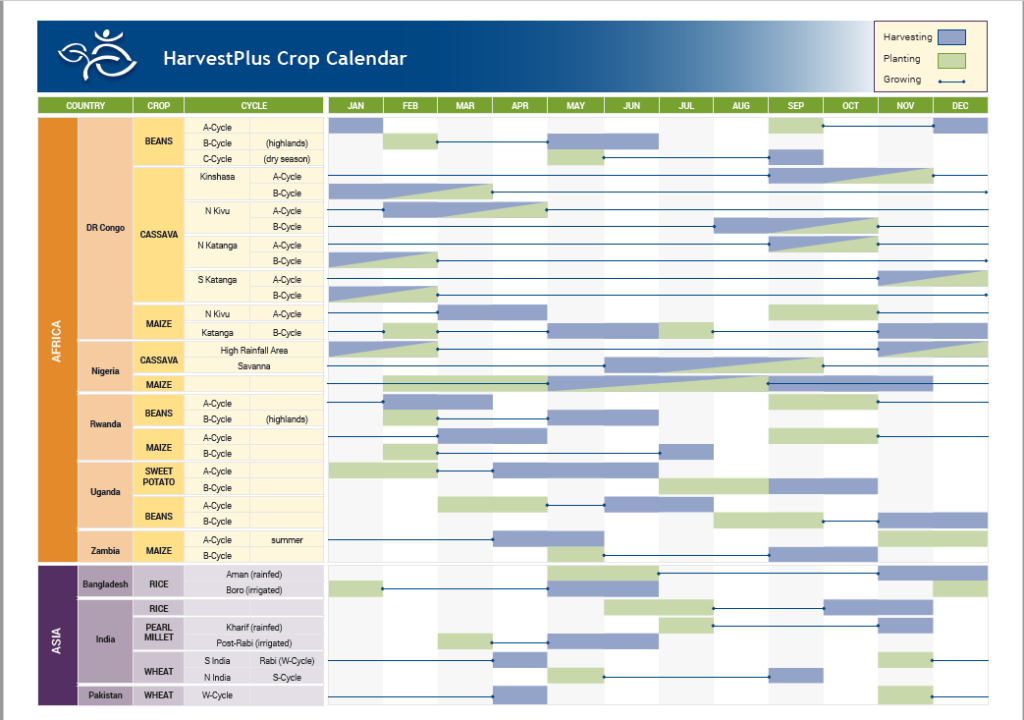HarvestPlus has published a new resource that its partners and stakeholders of biofortified crops in eight target countries will find useful. The Crop Calendar maps the agricultural cycle for select staple food crops, capturing planting and harvesting seasons across the year. The calendar also plots how long these crops are expected to grow in the field before harvests.
In the eight featured countries located in Africa and Asia, HarvestPlus operates on the ground to deliver and promote biofortified staple crops, including iron beans and pearl millet, vitamin A cassava, maize and sweet potato, and zinc rice and wheat. The crop calendar displays these crops by country: Democratic Republic of Congo (beans, cassava and maize); Nigeria (cassava and maize); Rwanda (beans and maize); Uganda (sweet potato and beans); Zambia (maize); Bangladesh (rice); India (pearl millet and wheat); and Pakistan (wheat).
With the crop calendar, farmers, seed companies, and other actors dealing with biofortified crops can better plan their activities and minimize risks. It is a valuable addition to the information resources these actors may already access through extension and sensitization channels. The calendar is broadly useful to stakeholders in the non-biofortified crops sector, too, since the main difference between conventional and biofortified varieties is nutritional and agronomic; the cycles are generally the same, but biofortified crops are simply more nutritious, high yielding, and resistant to threats such as drought and diseases.
A growing number of farmers and countries are adopting biofortified crops around the world, prompting the need for readily accessible information resources like the crop calendar. Some 15 million people, mainly in Africa and Asia, are already growing and reaping the benefits of biofortified crops. The calendar will be updated as more of these crops are released in both continents. A similar calendar focusing on biofortified crops in the Latin America and Caribbean region is under development.
